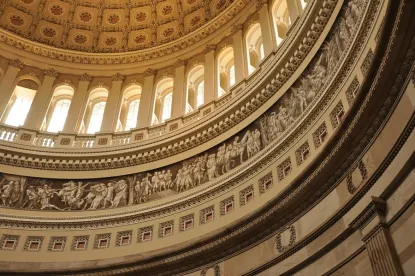In the early morning hours of Saturday, March 14, the U.S. House of Representatives, after intensive negotiations with The White House, passed a bill that is intended to provide relief to employees of small and medium-sized employers and, through tax relief, to the employers themselves. The bill will now go to the U.S. Senate where it is expected to pass without substantial amendment. President Trump has announced that he will sign the bill into law. The House bill provides that it becomes effective 15 days after enactment. If President Trump signs the bill mid-week, then this legislation will go into effect in early April. BUT PLEASE STAY TUNED; AT PRESS TIME, THE STATUS OF THE LEGISLATION WAS FLUID.
The House bill, entitled the “Families First Coronavirus Response Act,” has provisions for nutrition waivers, coverage for testing, Medicare waivers, etc. The three sections of most immediate interest to employers, however, are the ones giving eligible employees limited emergency paid leave, making coronavirus-related leave under the FMLA paid, and appropriating funds to the States’ unemployment compensation programs to incentivize more flexibility in awarding unemployment compensation benefits to those affected by the coronavirus pandemic.
Before turning to a few highlights, it is worth mentioning three distinctive features of this pending legislation. First, both the emergency paid leave and the paid FMLA leave apply only to employers with fewer than 500 employees. Typically, employment laws at the federal level take a different tack: they apply to employers who have more than a certain number of employees. Clearly, the focus here is on small- to medium-sized employers. Second, the paid leave is the first federally mandated leave of this type. A few states and large municipalities mandate paid sick leave, but this mandate is the first of its type at the federal level. Third, the new paid leave (both types) is temporary. The law will sunset on December 31, 2020.
“The Emergency Paid Sick Leave Act (EPSLA)” (Division E of FFCRA)
- This completely new law will provide up to two weeks of paid leave for employees off work due to being directly affected by the coronavirus.
- Applies to employers with fewer than 500 employees or public employers of any size.
- Employees are immediately eligible; they just have to be employed at the time requesting leave.
- Employees are eligible if they need -
- to self-isolate because the employee is diagnosed with the coronavirus;
- to obtain a medical diagnosis or medical care if experiencing symptoms of the coronavirus;
- to comply with a recommendation or order from a public official or healthcare provider to stay off work due to exposure of the employee to the coronavirus or the exhibiting of symptoms;
- to care for a family member who has been diagnosed or is showing symptoms of the coronavirus; or
- to care for a child because of closure of a school or a childcare facility.
- Full-time employees can take up to 80 hours of paid leave; part-time employees are entitled to paid leave equal to an average of the hours they would work in a two-week period.
- If the employee’s health triggers the need for leave, then the pay is at 100%; if the leave is to care for a family member or a home-bound school student, then the employer has to pay just two-thirds of the regular pay.
- Employers may not require employees to exhaust other types of leave before drawing upon the emergency paid leave.
- Covered employers will be entitled to tax credits for the monies paid to employees for this type of leave; as well, the new FMLA leave discussed below has those credits.
“Emergency Family and Medical Leave Expansion Act (EFMLEA)” (Division C of FFCRA)
- The 25-year old FMLA is being temporarily expanded to provide paid leave for those employees with qualifying coronaviarus-related conditions.
- Employees must be employed at least 30 days to be eligible; that is a marked departure from regular FMLA leave that requires a tenure of at least 12 months.
- Employees are eligible for coronavirus-related leave for reasons very similar to those set forth above for EPSLA leave: i.e., diagnosis, symptoms, care for family, and school closures. If an employee is home because of an order or recommendation to stay away from work, the employee may still not qualify for leave if he or she is able to perform the functions of the job while working remotely.
- The Act dispenses with the requirements that coronavirus-affected employees establish a “serious health condition” or provide a medical certification, although an employer can most likely request some documentation of illness. It is clear, however, that the drafters did not want to burden either employees or healthcare providers with an onerous verification process.
- The first 14 days of EFMLEA leave may be unpaid. (Given the similar eligibility criteria for EPSLA leave, an employee could cover the first two weeks with that type of leave.)
- An employer may not require employees to exhaust other types of leave during the 14-day waiting period, but an employee may elect to do so.
- An employer must provide paid leave for each day that the employee takes leave after the first 14 days. Thus, the pay status under this Act can last 10 weeks.
- An employer need pay only two-thirds of the employee’s regular pay while on this leave. Part-time employees are paid in a similar fashion.
- An employer must restore an employee taking leave to his or her former position once the leave concludes, but an employer of fewer than 25 employees can be excused from this obligation under certain conditions.
- Employers with fewer than 50 employees are not subject to lawsuits by employees for non-compliance, but the Department of Labor could still bring an enforcement action.
- It is currently unclear whether employees, who have already exhausted some or all of their FMLA leave, will get a new allotment of leave under this Act. It is recommended that employers take an expansive view of the new law.
“Emergency Unemployment Insurance Stabilization and Access Act of 2020” (Division D of FFCRA)
- For employees who are not directly affected by the pandemic (e.g., sickness, self-isolation, care for family members), but lose work due to business interruption, then unemployment benefits, not paid leave under these two new laws, is going to be their option.
- All employees losing work after the legislation becomes effective will benefit from the liberalization of unemployment compensation benefits; there need be no showing of a connection to the coronavirus.
- Provides $1 billion dollars in funds to bolster the unemployment compensation funds of the States.
- In order to participate in this funding, the States must –
- require employers to provide notification of the availability of unemployment compensation to employees at the time of separation from employment.
- ensure that applications for unemployment compensation are accessible in at least two of the following: in-person, by phone, or on-line.
- Take steps to ease eligibility requirements, including waiving work search requirements and the typical one-week waiting period.
- Non-charging employers (i.e., increasing experience ratings) directly impacted by coronavirus in the workplace or by a directive to isolate or quarantine employees.




 />i
/>i
